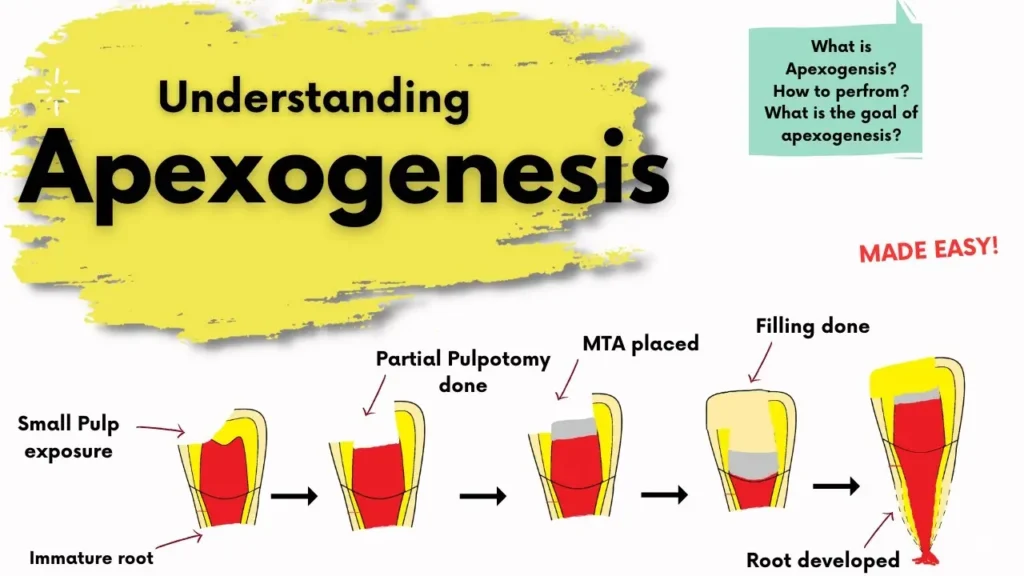When a child’s permanent tooth gets hurt or infected before it fully develops, it can lead to a serious dental challenge. One such challenge involves the incomplete development of the root, especially the tip of the root (called the apex). That’s where a dental procedure called apexogenesis in pediatric dentistry comes in — a modern way to save young teeth and help them continue growing naturally.
What Is Apexogenesis?
Apexogenesis is a vital pulp therapy procedure performed in children when the inner soft tissue of an immature permanent tooth (the pulp) is still healthy in part — even after trauma or deep decay. The main goal is to keep the living pulp tissue alive, allowing the root to continue its natural development and close at the tip.
Why is it Important?
In younger children, the roots of permanent teeth aren’t fully formed when the tooth erupts. If infection or trauma affects the tooth at this stage, it may stop developing — leaving the tooth with thin walls and an open root tip, making it weaker and harder to treat later. Apexogenesis helps avoid this.

When Is Apexogenesis Done?
Your child may need apexogenesis if:
- A permanent tooth is fractured or broken and the pulp is exposed.
- There’s deep decay but some healthy pulp tissue remains.
- The tooth has an immature open apex and early signs of inflammation.
This is typically done only if there is no extensive infection and some vital pulp can be preserved.
How Is the Procedure Done?
- Local anesthesia is given to keep the child comfortable.
- The inflamed part of the pulp is carefully removed.
- A special bio-compatible material like MTA (Mineral Trioxide Aggregate) or calcium hydroxide is placed over the healthy pulp tissue.
- The tooth is sealed and restored, often with a crown or filling.
- The tooth is monitored over time through follow-up X-rays to check continued root development.
What Are the Benefits?
- Allows natural root growth to continue
- Helps the root become stronger and longer
- Keeps the tooth alive (vital), avoiding the need for root canal treatment at a young age
- Preserves the natural function and aesthetics of the tooth
Aftercare & Follow-Up
Your child will need regular dental check-ups to ensure the tooth continues to heal and develop normally. Any signs of pain, swelling, or change in the tooth’s color should be reported to the dentist right away.
Conclusion
At KNT Clinic, our pediatric dental specialists are highly trained in treating immature teeth with modern procedures like apexogenesis. We believe in preserving every child’s smile with the most gentle and effective care possible.
👉 If your child has suffered dental trauma or has a deeply decayed tooth, don’t wait. Early treatment can save the tooth and avoid complications later.
📞 Call us or WhatsApp us today to book an appointment!
Read also: Apexification in Children




